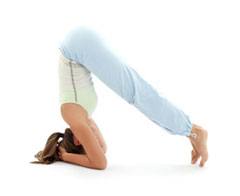Equilibration

Balance comprises body and eye stability. It requires the involvement of a set of mechanisms that modulate the muscular tone to enable changes in posture.
This complex control mechanism, which enables us to maintain our balance despite changes to our posture and movement, could encounter shortcomings when unusual situations occur, for example, by over stimulation or by an ailment (lesions in a peripheral sensory organ, vestibular disorder...).
These shortcomings of the control mechanism manifest themselves as destabilisation of the body, imbalances of the eyes, and a source of vertigo.
An overview of the balance system
A multimodal static and dynamic stabilisation system, equilibration calls upon receptor systems that send, information along afferent pathways to the central nervous system and effector systems, comprising oculomotricity and the action of antigravity muscles.
The respective roles of the different system vary greatly from one individual to the next.
But one clear fact is that the vestibular apparatus is permanently involved in adaptation responses, determining the upright position of the head, primarily with respect to posture, as well as assessing any movement thereof.
The receptor systems
Equilibration is the permanent integration of information transmitted by the 3 receptor systems: sight, the proprioceptive system and the vestibular system.
Sight
Essentially a guiding element for motion.
The eye allows us to focus on an essential point of reference: the position of the individual with respect to the objects that surround them. This spatial information is used to determine posture, balance and direction.
Sight is regulated by the labyrinth. To take away the ability to fix the gaze on a point of reference, and consequently allow us to study nystagmus, all vestibular examinations are carried out in the dark.
The proprioceptive system
Comprised, by way of the superficial (cutaneous) and deep (musculotendinous and articular) mechanoreceptors, an essential input for equilibration.
Among the cutaneous mechanoreceptors, those on the soles of the feet play a leading role, sensing the differential pressure between the foot arches. They also allow us to sense any irregularities and unevenness of the ground and to adapt our equilibration reflexes to them.
The deep mechanoreceptors are those found in the bones and joints, muscles and tendons. They send information about the position and the movement of the different segments of the body, and any changes to the tension and pressure of the tendons, muscles and joints.
The role of proprioceptors on the nape of the neck, are of particular importance: they provide essential information to maintain posture and equilibration. Certain balance disorders stemming from trauma, especially cervico-spinal injury, underline their importance.
The vestibular system
The vestibule, a component of the inner ear, contains the sensory organs that receive messages and transform them into nerve impulses.
Specialised in detecting linear and rotary accelerations of the head in space, it is actively involved in maintaining direction as well as regulating static and dynamic balance.
Effector systems
Information from the 3 sensory systems travels along the ducts to the vestibular nuclei to be analysed and a comparison to be carried out between them as well as with data collected earlier.
When this information is coherent, a compensation reflex movement of the body and eyes is triggered. Vestibulo-ocular reflex allows the eyes to remain stable, with crisp eyesight, and the vestibulospinal reflex, the stabilisation of the body.
Spatial orientation and balance are therefore dependent on 2 motor systems: combined oculomotricity and somatic oculomotricity. The cerebellum ensures coordination.
Combined oculomotricity
To facilitate spatial orientation, holding a steady gaze brings into play different reflex arcs that use the effector oculomotor pathway, comprising the oculomotor nuclei, ocular nerves III, IV and VI, which results in a particular combined movement of the eyes, as they try to steady the gaze.
Somatic motricity
Both at rest and when moving, maintaining balance is ensured by the contraction of the antigravity striated muscles of the neck, torso and limbs. Maintaining the body upright requires a balance between the inhibition and contraction of the antagonistic muscles. Said control stems from cutaneous, visual, proprioconceptive (joints and tendons) and vestibular information, or from an established programme at different levels of the central nervous system.





